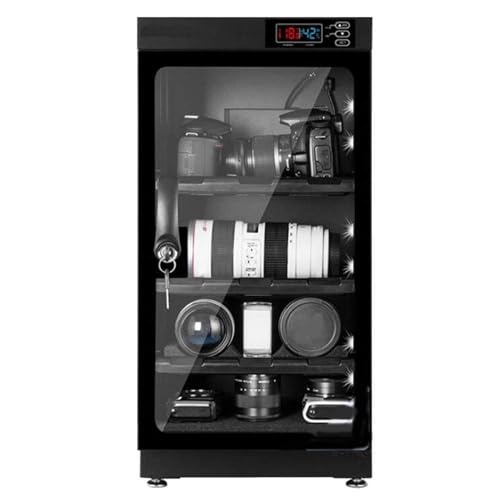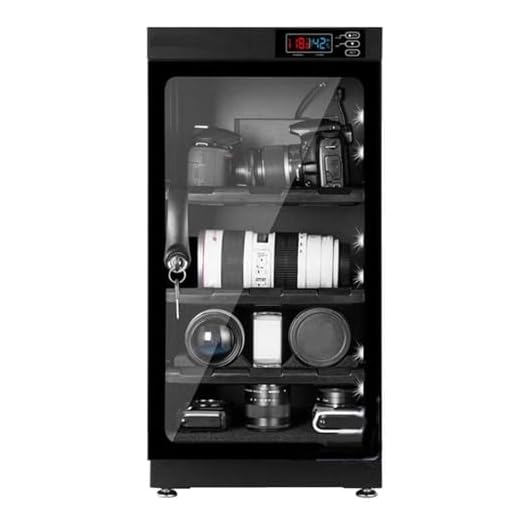




Digital cameras have revolutionized the way we capture and store memories, offering convenience and flexibility that traditional film cameras cannot match. One crucial aspect of digital cameras is their storage capacity, which determines how many photos and videos you can store on the device before transferring them to a computer or external storage.
The storage capacity of a digital camera is typically measured in gigabytes (GB) or terabytes (TB) and varies depending on the model and manufacturer. Higher-end cameras often come with larger storage capacities to accommodate higher resolution photos and videos, while compact cameras may have more limited storage space.
Having sufficient storage capacity is essential for photographers who take a large number of photos or record long videos without the opportunity to offload them onto another device. Many digital cameras also support expandable storage options, such as SD cards, to increase the available space for media files.
The Importance of Storage Capacity
Having sufficient storage capacity in a digital camera is crucial for photographers, especially those who take a large number of high-resolution photos or videos. A higher storage capacity allows users to capture more moments without constantly worrying about running out of space.
With larger storage capacity, photographers can also shoot in RAW format, which preserves more image data and allows for greater flexibility in post-processing. This is particularly important for professional photographers who require the highest quality images.
Additionally, a larger storage capacity enables photographers to travel without the need to constantly transfer files to external storage devices. This convenience is especially valuable when on the go or in situations where access to a computer may be limited.
Ultimately, the storage capacity of a digital camera plays a significant role in the overall user experience and can greatly impact the ability to capture and preserve memories effectively.
Understanding Digital Camera Memory
When it comes to digital cameras, one of the key features to consider is the storage capacity. The storage capacity of a digital camera determines how many photos and videos you can store on the device before needing to transfer them to a computer or external storage device.
Most digital cameras use removable memory cards to store photos and videos. These memory cards come in various capacities, ranging from a few gigabytes to several terabytes. The most common types of memory cards used in digital cameras include SD cards, microSD cards, and CompactFlash cards.
The storage capacity of a digital camera is typically measured in gigabytes (GB) or terabytes (TB). For example, a camera with a storage capacity of 32GB can store approximately 8,000 photos taken at 12 megapixels each. It’s important to consider your storage needs and the resolution of the photos you plan to take when choosing a digital camera with the right storage capacity for you.
| Memory Card Type | Capacity | Approximate Number of Photos (12MP) |
|---|---|---|
| SD Card | 32GB | 8,000 |
| microSD Card | 64GB | 16,000 |
| CompactFlash Card | 128GB | 32,000 |
Factors Affecting Storage Capacity
There are several factors that can affect the storage capacity of a digital camera:
| 1. File Format: | The file format used by the camera can impact the storage capacity. For example, RAW files take up more space compared to JPEG files. |
| 2. Megapixels: | The higher the resolution of the camera (measured in megapixels), the larger the file size of each image, thus reducing the overall storage capacity. |
| 3. Compression: | The level of compression applied to the images can affect the file size. Higher compression can reduce file size but may also reduce image quality. |
| 4. Memory Card Capacity: | The storage capacity of the memory card being used in the camera is a limiting factor. Higher capacity cards allow for more photos to be stored. |
| 5. Video Recording: | If the camera is capable of recording videos, this can also impact storage capacity as video files are larger than photos. |
Types of Memory Cards
When it comes to digital cameras, the storage capacity is crucial for storing all your photos and videos. Different cameras use different types of memory cards to store data. Here are some common types of memory cards:
1. SD (Secure Digital) Card
SD cards are one of the most popular types of memory cards used in digital cameras. They come in different sizes and speeds, with capacities ranging from a few gigabytes to several terabytes.
2. CF (CompactFlash) Card
CF cards are larger in size compared to SD cards and are commonly used in professional-grade cameras. They offer high storage capacities and fast data transfer speeds, making them ideal for capturing high-resolution images and videos.
Choosing the Right Storage Capacity
When selecting a digital camera, one of the crucial factors to consider is the storage capacity. The storage capacity determines how many photos and videos you can store on the camera before needing to transfer them to a computer or external storage device. Here are some tips to help you choose the right storage capacity for your needs:
- Assess Your Usage: Consider how you plan to use the camera. If you take a lot of photos and videos, opt for a higher storage capacity to avoid running out of space quickly.
- Check the Resolution: Higher resolution photos and videos take up more storage space. If you shoot in high resolution, you may need a larger storage capacity.
- Consider External Storage: If you prefer not to delete photos frequently, look for a camera with expandable storage options such as SD cards or USB drives.
- Think About Backup: If you travel frequently or need to ensure your photos are safe, consider a camera with built-in backup features or automatic cloud storage options.
By considering these factors and your own photography habits, you can choose a digital camera with the right storage capacity to meet your needs and avoid running out of space at crucial moments.
Managing Your Camera’s Storage
When it comes to managing your digital camera’s storage capacity, there are a few key things to keep in mind. Here are some tips to help you make the most of your camera’s storage:
1. Check Your Storage Space Regularly
It’s important to regularly check the remaining storage space on your camera to ensure you don’t run out of room while capturing important moments. Delete any unnecessary photos or videos to free up space for new ones.
2. Use External Storage Devices
If your camera supports external storage devices such as SD cards, consider investing in one to expand your storage capacity. This way, you can easily swap out full cards for empty ones and keep shooting without interruption.
By following these simple tips, you can effectively manage your camera’s storage capacity and never miss a memorable moment!
Upgrading Storage Capacity
As digital cameras continue to evolve, the need for increased storage capacity becomes more critical. Upgrading the storage capacity of your camera can provide you with the flexibility to capture more photos and videos without constantly worrying about running out of space.
Memory Cards
One of the most common ways to increase storage capacity is by using memory cards. Memory cards come in various sizes, such as SD, microSD, and CompactFlash, with capacities ranging from a few gigabytes to several terabytes. By investing in a high-capacity memory card, you can significantly expand the storage capabilities of your camera.
Cloud Storage
Another option for upgrading storage capacity is to utilize cloud storage services. By uploading your photos and videos to the cloud, you can free up space on your camera’s internal memory or memory card. Additionally, cloud storage allows you to access your files from any device with an internet connection, providing added convenience and security.
FAQ
What is the storage capacity of a digital camera?
The storage capacity of a digital camera varies depending on the model and brand. Most digital cameras come with built-in memory that can range from a few megabytes to a few gigabytes. Additionally, digital cameras typically support external memory cards such as SD cards, which can further expand the storage capacity. Some high-end digital cameras can support up to 256GB or more of storage.
Can I increase the storage capacity of my digital camera?
Yes, you can increase the storage capacity of your digital camera by using external memory cards. Most digital cameras support various types of memory cards like SD, SDHC, and SDXC, which allow you to expand the storage capacity. Simply insert the memory card into the designated slot on your camera, and you can instantly increase the amount of photos and videos you can store.
How many photos can a digital camera hold?
The number of photos a digital camera can hold depends on several factors, including the resolution of the photos, the file format used, and the storage capacity of the camera. For example, a 20-megapixel camera shooting in RAW format will take up more storage space than a 10-megapixel camera shooting in JPEG format. As a rough estimate, a 16GB memory card in a 12-megapixel camera shooting in JPEG format can hold around 4500 photos, but this number can vary widely based on the aforementioned factors.







